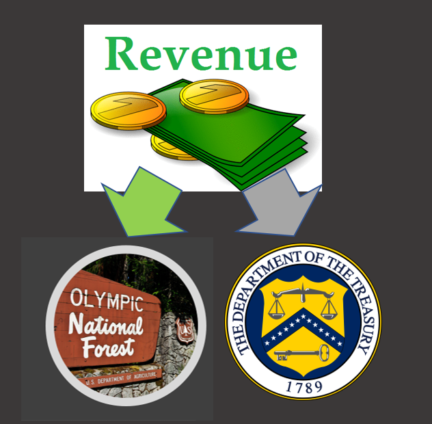What is a Collaborative?
The Forest Service defines collaboration as “a structured manner in which a collection of people with diverse interests share knowledge, ideas, and resources while working together in an inclusive and cooperative manner toward a common purpose.” (36 CFR 219.19)
A collaborative does not replace the Forest Service, NEPA, or any existing environmental laws. A collaborative is simply a group of stakeholders who provide input and capacity toward proposals or projects that they suggest to the Forest Service, or who help to implement and monitor Forest Service-approved projects. It is up to the Forest Service to decide whether or not to adopt projects recommended to them by collaborative groups. If the USFS decides to adopt a project by a collaborative, all decision-making authority still rests with the Forest Service and they must still put that project through the normal NEPA review and public input process.
Volunteers & Contractors
The Collaborative often uses volunteers and may hire private contractors or consultants to assist the Forest Service with assessment, layout, prescriptions and other aspects of collaborative projects. The Collaborative may also use utilize volunteers and/or consultants to assist the USFS with capacity on other USFS projects as well. This added capacity to the USFS and the broad support around new projects will increase the timber volume coming off the Olympic National Forest.
NOTE: The Collaborative will not do the actual logging. Any sales the collaborative is involved in must still go through the normal USFS/NEPA and bidding process. The USFS will offer each sale under their normal bidding process.
Stewardship
The other benefit of the Collaborative is that we focus on Stewardship sales, a special type of sale classification that can only be used if there is collaborative support demonstrated behind the sale. Stewardship sales allow all the receipts from a timber sale to stay on the Olympic National Forest and be used for needed restoration projects, rather than sent to the Treasury.

Therefore, Stewardship sales in which a collaborative is involved provide a unique opportunity for double restoration – restoration thinning of a previously harvested stand to restore late successional characteristics as well as additional aquatic restoration from the receipts from the restoration thinning sale. Non-harvest related stewardship restoration projects must be identified at the front-end of the sale planning process, and undergo the same NEPA review as the sale itself, during the NEPA process for the sale.
Olympic Collaborative Focus
Generally speaking, the types of timber sales our collaborative will be proposing are simply additional habitat restoration “thinning” of dense second-growth stands in old plantations (clear cuts), to accelerate their transition into more complex forest habitat with old-growth characteristics, entirely under the existing guidelines of the Northwest Forest Plan.
Our collaborative will be working with local specialists and watershed groups to identify and pursue non-harvest aquatic restoration Stewardship projects on Olympic National Forest to improve local water quality and salmon habitat as a component of habitat restoration thinning sales we are involved in.
